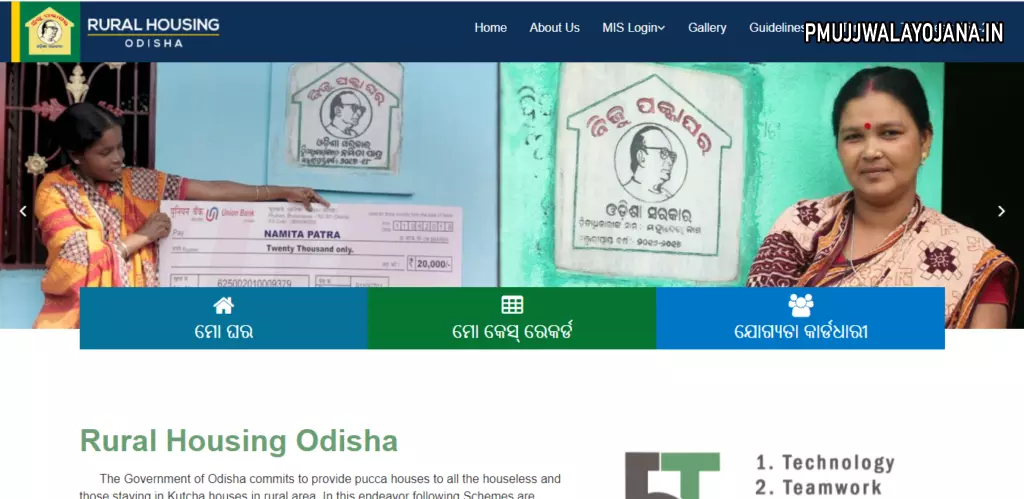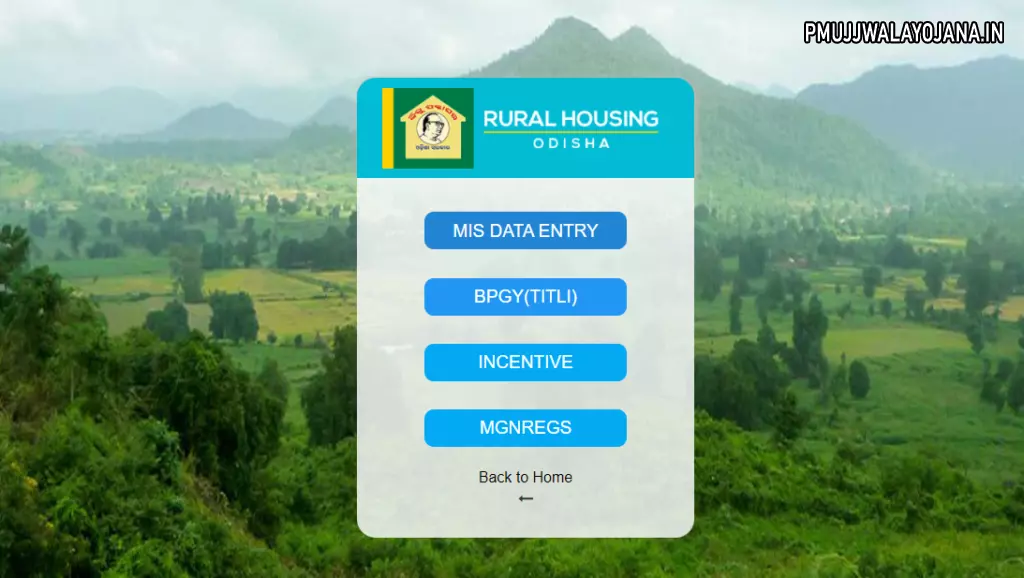Odisha Nirman Shramik Pucca Ghar Yojana is a government scheme aimed at giving safe and permanent homes to building and other construction workers in rural Odisha. Housing is one of the basic needs for a decent life. With this scheme, workers registered under Odisha’s construction worker welfare board can get a pucca house to improve their living conditions. Let’s look into everything you should know about the Nirman Shramik Pucca Ghar Yojana 2025, including how to apply and the benefits you will receive.
Overview of Nirman Shramik Pucca Ghar Yojana 2025
This scheme by the Odisha government helps building and construction workers living in rural areas. If you are registered with the Odisha Building and Other Construction Workers Welfare Board, you can get a permanent house built with government support. The cost of one house is Rs 1,20,000 in non-IAP (non-Incentive Area Program) districts and Rs 1,30,000 in IAP districts. The government may update these amounts as needed. Along with housing funds, you can receive wages for 90 to 95 days to support your livelihood while building the house. Early completion will earn you extra incentives to encourage you.
Main Goals of Nirman Shramik Pucca Ghar Yojana
The scheme aims to provide a permanent home to eligible construction workers in rural Odisha. It gives you ownership of a pucca house – a strong and safe shelter that meets your family’s basic needs. This helps improve your quality of life and gives you more independence.
At a Glance: Scheme Details
| Scheme Name | Nirman Shramik Pucca Ghar Yojana |
| Launched By | Government of Odisha |
| Beneficiaries | Building and other construction workers |
| Purpose | Provide pucca houses to eligible workers |
| Official Website | https://rhodisha.gov.in/index.php |
| Year | 2025 |
| State | Odisha |
| Application Mode | Online and Offline |
Main Features of the Scheme
- Funded by Odisha Building and Other Construction Workers Welfare Board with yearly budgets
- Houses are usually registered in the name of the female head of the family
- No contractors involved; beneficiaries build their own homes
- Funds transfer directly to the beneficiary’s bank account
- House minimum covered area is 25 square metres including cooking space (excluding toilet)
- Roofs must be made with RCC or a similarly strong material
- Innovations in housing design and materials are encouraged
Components and Benefits
- Unit cost for new house construction: Rs 1,20,000 in non-IAP and Rs 1,30,000 in IAP districts (subject to government revision)
- Wages for 90 (non-IAP) to 95 (IAP) person days under MGNREGA during construction
- Additional Rs 12,000 for Individual Household Latrine (IHHL) under MGNREGA or Swachh Bharat Mission
- Extra support like drinking water connection, electrification under Deen Dayal Upadhyay Gram Jyoti Yojana, social security benefits
- Incentives for early house completion: Rs 20,000 if done within 4 months, Rs 10,000 if done within 6 months of first installment
How Beneficiaries are Selected and Targets Set
- The welfare board sets annual budgets based on available funds
- District Labor Officers submit beneficiary lists to Block Development Officers (BDO)
- BDO verifies eligibility and does field checks
- Eligible workers’ lists go to block-level selection committees
- District Collector approves and forwards the final list to the department
- Selected beneficiaries are given houses based on priority from the awaassoft system
How Does Implementation Work?
- Beneficiaries build the houses themselves on their or family member’s land
- Panchayat Samiti and District Rural Development Agency supervise the scheme
- Housing options vary by region, including cooking and sanitation space
- Strong roofs and walls designed to withstand local weather
- If building on a relative’s land, a no-objection certificate is needed
- Households get keys ideally in the female head’s name or jointly with spouse
- Materials like cement, steel, bricks can be sourced via district authorities or independently
- Block staff assigned to assist beneficiaries during construction
- Special help is given to disabled or elderly beneficiaries, sometimes through mason training programs
Installment Payment Schedule
| Installment | Condition | IAP District | Non-IAP District |
|---|---|---|---|
| First | Work order issued | Rs 20,000 | Rs 20,000 |
| Second | Plinth completed | Rs 35,000 | Rs 30,000 |
| Third | Roof level completed | Rs 45,000 | Rs 40,000 |
| Fourth | House completed, including latrine and occupation started | Rs 30,000 | Rs 30,000 |
| Total | Rs 1,30,000 | Rs 1,20,000 |
Important Points About Fund Release
- Require geo-tagged photos of beneficiary with their current house and new building site before work starts
- Upload inspection photos on the awaassoft app or state portal regularly
- Keep beneficiary ID, Aadhaar, and mobile number details updated properly
- If beneficiary has no mobile, use a relative’s or friend’s mobile number for records
- Installments after the first are released within a week of site verification and photo submission
- After house completion, beneficiary places a scheme logo plate on the house front wall
- Money is transferred via Public Financial Management System (PFMS) directly to bank accounts
Project Timeline and Financial Details
- Completion should happen within 12 months after the first installment
- For bigger houses, it’s suggested to build a smaller core house first, then expand later
- Board manages funds and releases yearly budget based on needs
- 4% of budget covers administrative costs, incentives, and logo plates
- District rural development opens dedicated bank accounts for scheme funds
- Interest earned on deposits is used for scheme activities
- Audits are done by Odisha auditor general or board-appointed audit firms
Monitoring and Inspection
- District collectors oversee smooth and proper scheme execution
- Project Director of DRDA responsible at district level; BDO at block level
- BDO inspects at least 10% of houses; district officers inspect at least 1%
- Extra inspections by Project Directors and APD Rural Housing in districts
- Portals like awaassoft and state dashboard used for progress tracking
- Timely data entry and updates are mandatory for better monitoring
- If a beneficiary’s house is destroyed due to natural disasters or accidents, they can get a new house again
- Labour and ESI departments manage the scheme administration
Who Can Apply? Eligibility Criteria
- Must be a permanent resident of Odisha
- Must be a building or other construction worker registered under the welfare board
- Should not already have a pucca house
- Must not have received housing benefits from other government schemes
Documents Needed for Application
- Aadhaar Card
- Ration Card
- Passport size photo
- Mobile phone number
- Email ID
- Residence certificate
- Income certificate
- Age proof
- No-objection certificate (if applicable)
How to Apply for Nirman Shramik Pucca Ghar Yojana
- Visit the official website of the Nirman Shramik Pucca Ghar Yojana
- On the homepage, click on “Apply” under the scheme section
- Fill in the application form carefully with all required details
- Upload the necessary documents
- Submit your application

How to Login on the Portal
- Go to the official website of the scheme
- Click on the “MIS Login” option on the homepage
- Choose “Data Entry” from the available options
- Enter your user ID and password on the new page
- Click “Login” to access your account

Contact Information
- For help, you can call the toll-free number: 155237